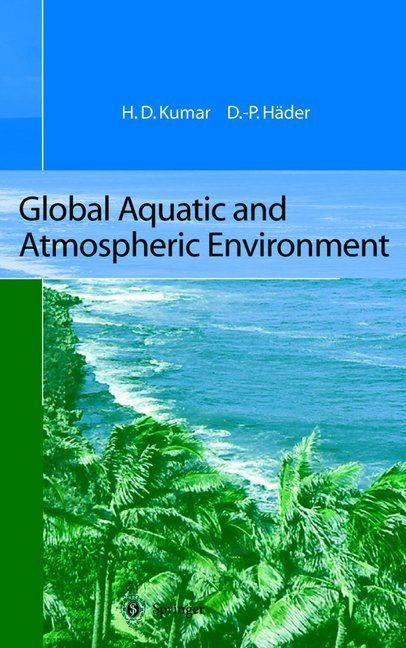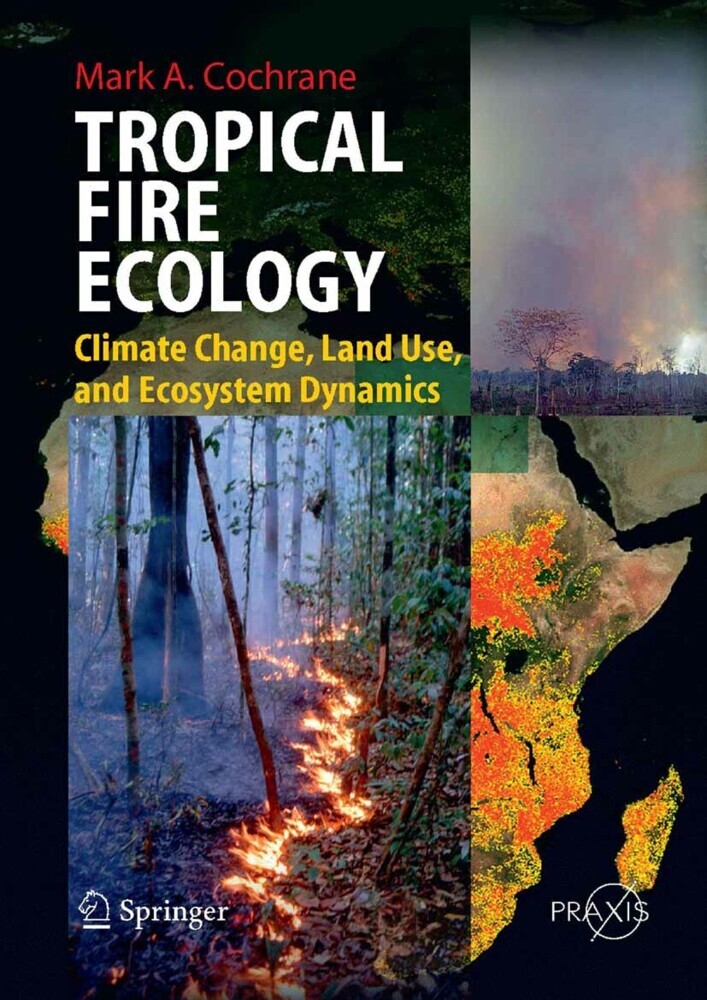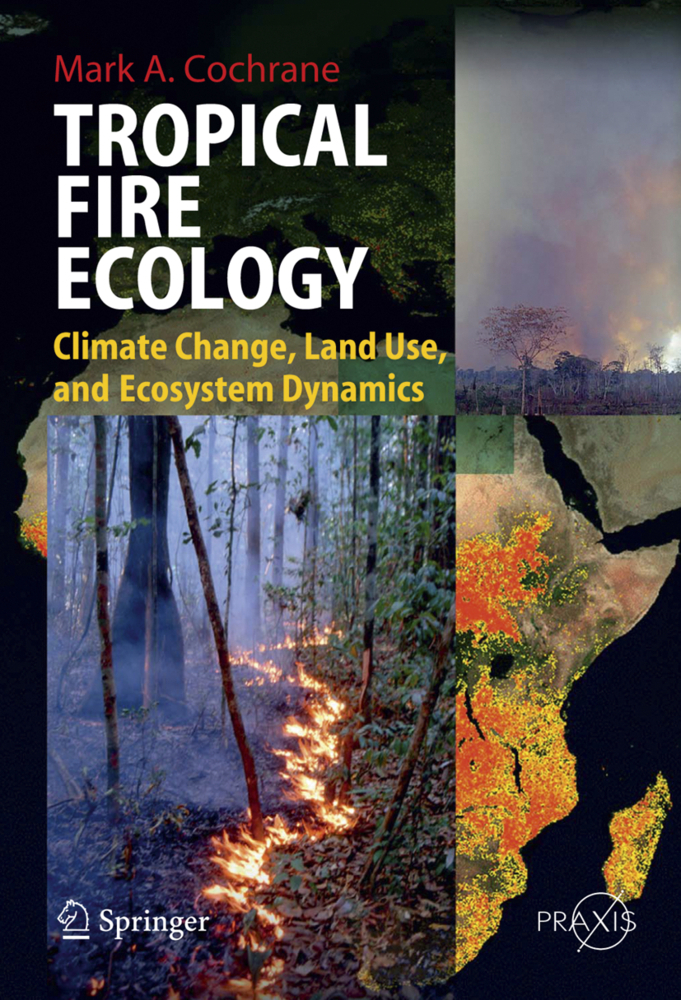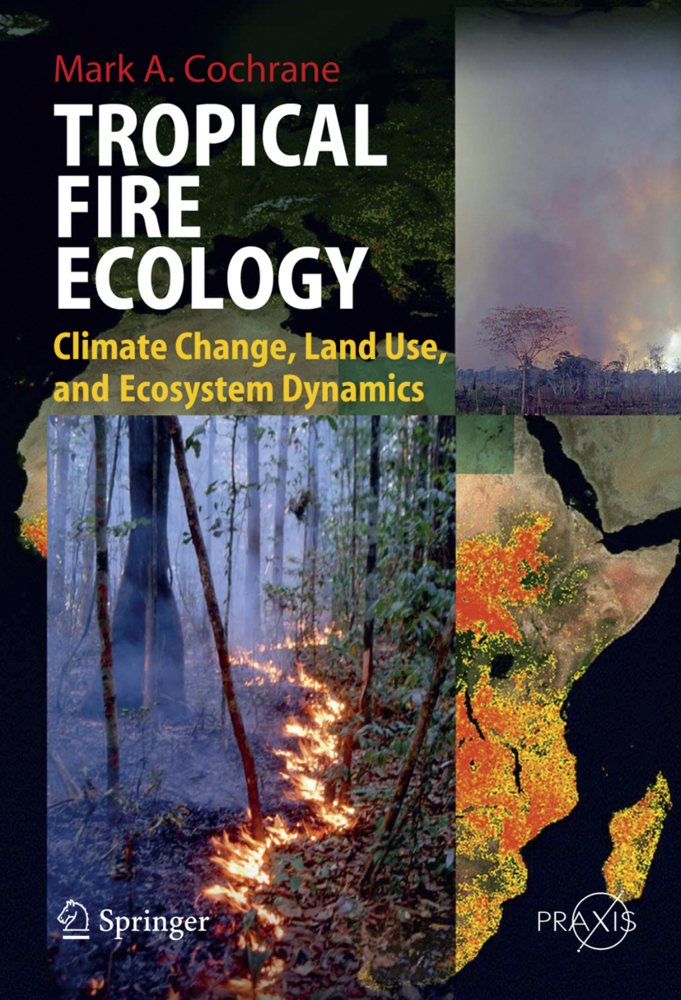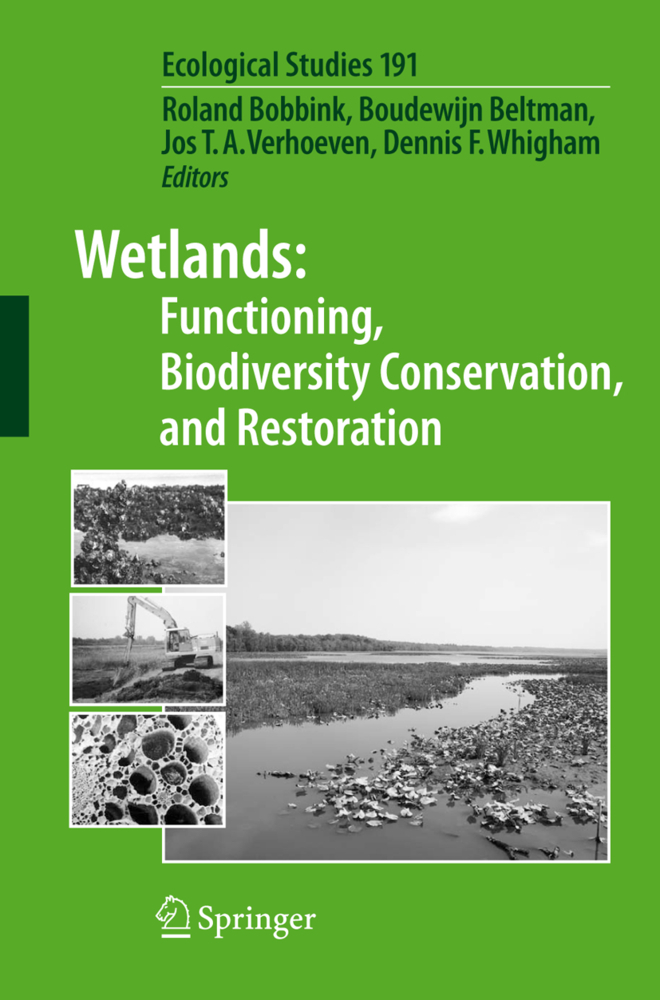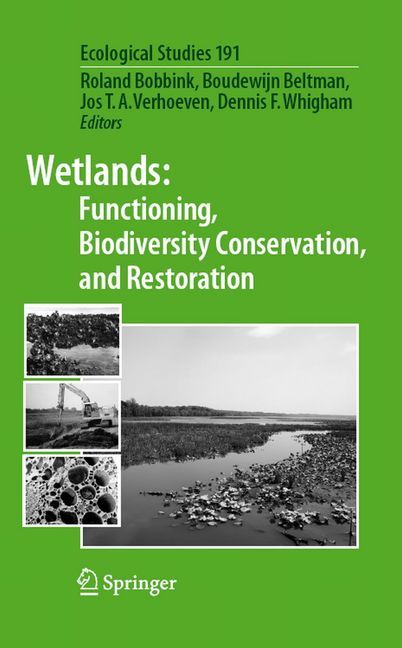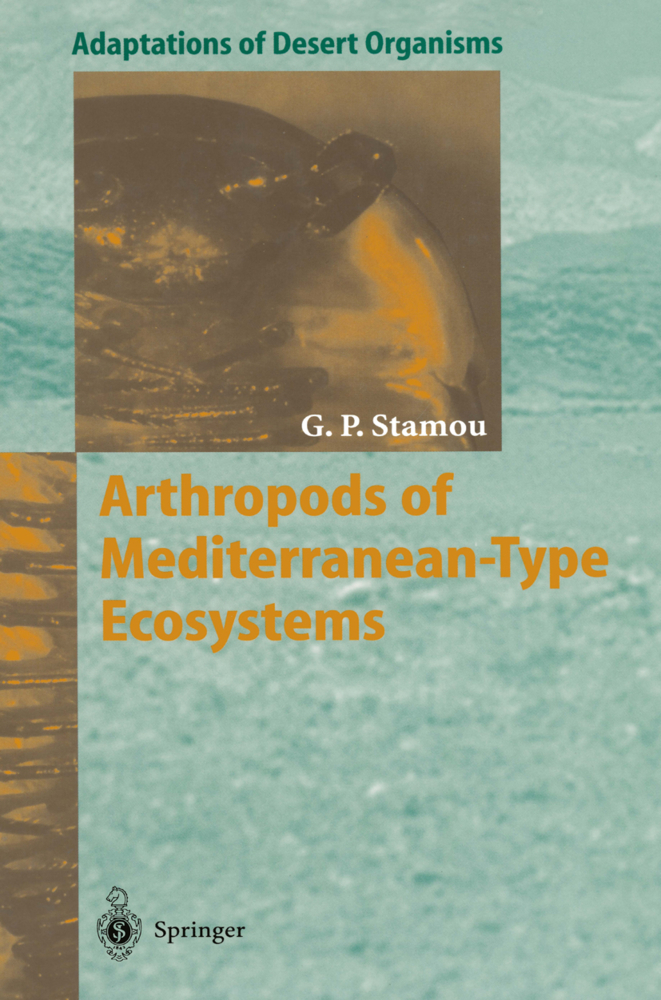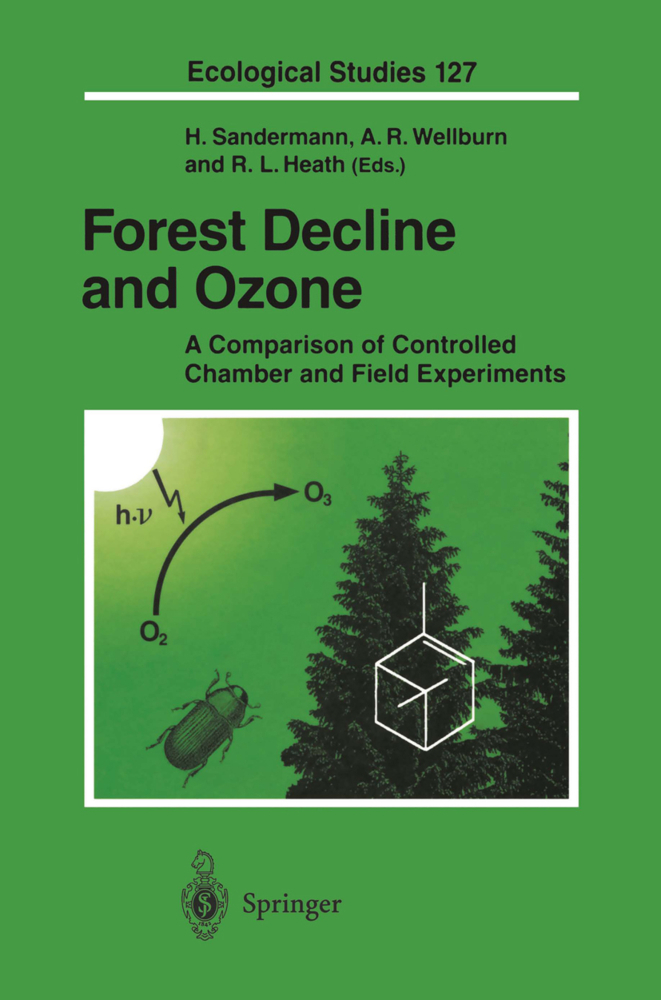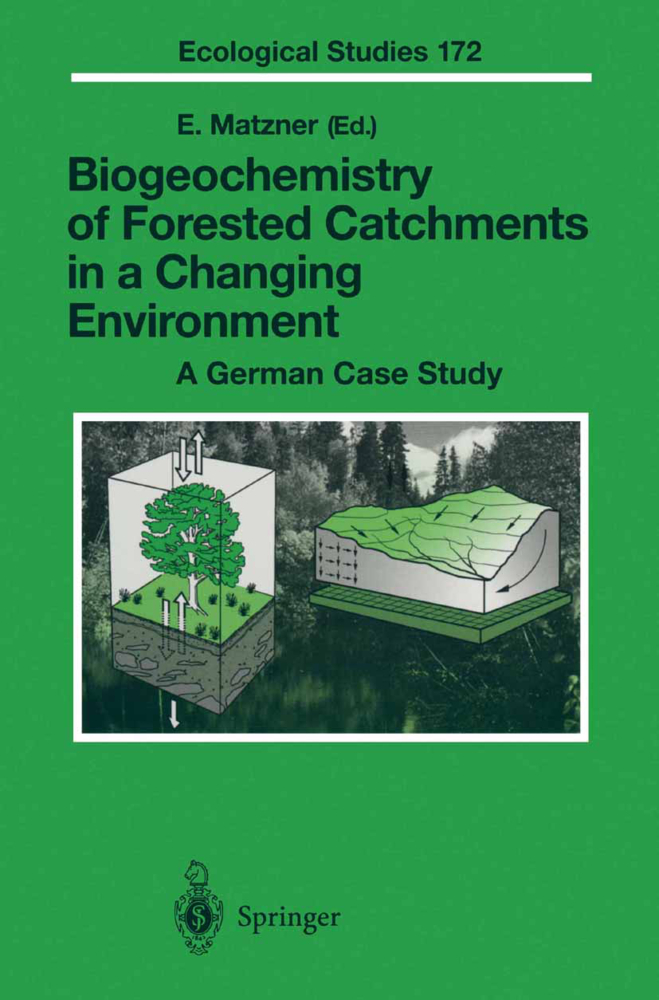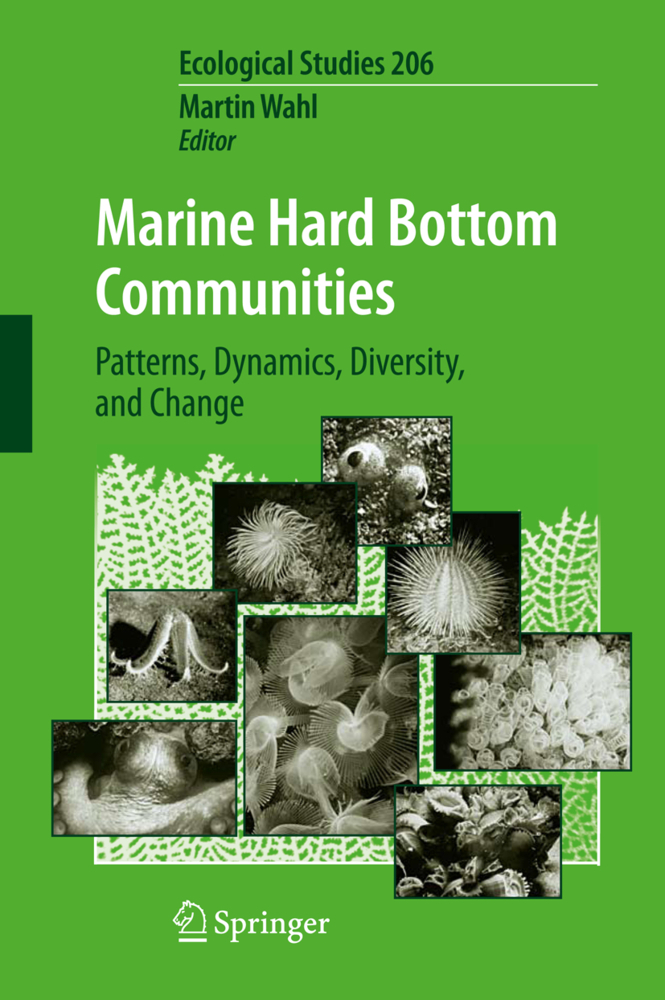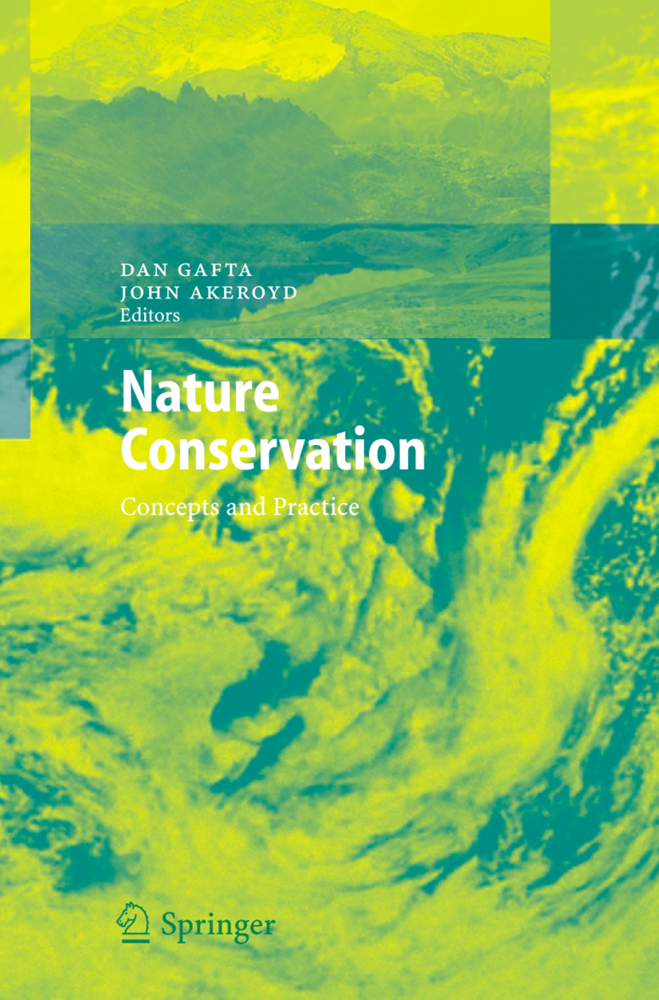Global Aquatic and Atmospheric Environment
Global Aquatic and Atmospheric Environment
During the last few decades anthropogenic activities in the industrially advanced countries have outcompeted nature in changing the global environment. This is best illustrated for example by the polluted lakes in Scandinavia and Canada, associated with acid deposition from fossil fuel combustion. One of the major challenges mankind is confronted with in the field of energy consumption is undoubtedly to ensure sustainability - a goal that requires improved management of natural resources and a substantial reduction of the noxious emissions which are dangerous to health and the environment. The threat of global climate change due to pollutant emissions causes se rious concern to many nations, and reaching an international consensus is likely to take some time. Carbon dioxide emissions have slowed only marginally in industrialized countries during the last few years, but have increased significantly in most developing countries due to increases in energy demand and the increasing use of fossil fuels, which remain the most readily available energy sources today. Unfortunately, far from learning lessons from the negative experiences of developed countries, many developing countries are taking the same path to development which has turned out to result in serious environmental consequences.
1.2 River Ecosystems
1.2.1 Uses of River Water
1.2.2 The River as a Biological Environment
1.2.3 Stream Organisms
1.2.4 Gravel-Bed River Mouths
1.2.5 The Flood Pulse Concept
1.2.6 The Riverine Productivity Model (RPM)
1.3 Freshwater Resources and Water Quality
1.3.1 Major Rivers of East Asia
1.4 World Water Use
1.4.1 Impacts of Mismanagement and Pollution
1.5 Nature of the Chemical Environment
1.5.1 Input of Organic Matter from Terrestrial Ecosystems
1.5.2 Aquatic Humus
1.6 Quantitative Pollutants
1.6.1 Pesticides
1.6.2 Mercury
1.6.3 Thermal Pollution
1.6.4 Metals
1.7 Global Change and Freshwater Ecosystems
1.8 Hydrological Cycle and Climate
1.8.1 Atmospheric Circulation
1.9 Groundwater
1.9.1 Isotope Hydrology and Water Resources
1.9.2 Biodiversity
1.9.3 Pollution
1.10 Population Increase and Water Management
1.11 Water and the Environment
1.12 Freshwater Augmentation Technologies
1.13 Water and Development
1.14 Health and the Water Cycle
1.15 Toxicity Testing in the Aquatic Environment
1.15.1 Assessing Toxicity
1.16 Biological Toxicity Testing Versus Environmental Monitoring of Impacts
1.16.1 Toxicity Test Species
1.17 Diseases Associated with Water and Poverty
1.18 Restoration of Water Quality in Some Rivers
1.18.1 Diffuse sources
1.19 Rural Water Treatment for Developing Countries
1.19.1 Roughing Filters
References
2 Lakes and Wetlands
2.1 Introduction
2.2 Trophic State
2.3 Interactions Between Physical and Chemical Processes
2.4 UV-B Effects
2.5 Seiching
2.5.1 Importance of Seiches
2.5.2 Circulation Patterns
2.6 Regional Lake Quality Patterns
2.6.1 Ecoregions
2.7 Inland Lakes
2.7.1 Nutrients
2.8 Trophic Status and Hypolimnetic Oxygen Concentration
2.9 Acidification
2.9.1 Acidification in Streams
2.9.2 Restoration of Acidified Waters
2.10 Large Lakes
2.10.1 Distinction Between Large and Small Lakes
2.11 Biogeochemistry
2.11.1 Biological Interactions
2.11.2 Land-Water Interactions
2.11.3 Physical Processes
2.11.4 Biogeochemistry and Nutrient Relations
2.12 Food Webs
2.13 Modeling of Lake Ecosystems
2.14 Lake Morphometry
2.15 Eutrophication
2.15.1 Eutrophication: Hysteresis and Remediation
2.15.2 Physical Modifications
2.15.3 Reversibility of Anthropogenic Eutrophication
2.16 Eutrophication Control
2.16.1 In-Lake Control Measures
2.16.2 Technology of Lake Restoration
2.17 Use of Ecological Indicators for Lake Assessment
2.17.1 Exergy, Structural Exergy and Buffer Capacity
2.17.2 Practical Assessment of Ecosystem Health
2.18 Role of Industry in Lake Management
2.19 Wetlands
2.19.1 Importance
2.19.2 Classes
2.19.3 Functions
2.19.4 Subsistence Production and Commercial Production
References
3 Marine Environment
3.1 Introduction
3.2 The Intertidal Zone
3.3 Hydrothermal Vents
3.4 Marine and Coastal Pollution: Regional Sustainability
3.5 Living Resources
3.6 Marine Biodiversity
3.6.1 Biodiversity in Coral Reefs
3.7 Oceanic Productivity and Water Color
3.8 Life in Oceans: Past and Present
3.9 Phytoplankton
3.10 Clouds and Sea Surface Temperature
3.11 Marine Plankton and Clouds
3.12 Ocean and Climate
3.13 El Niño and Related Phenomena
3.14 Marine Eutrophication
3.15 Marine Litter
3.15.1 Coastal Dwellers
3.16 Disruption of Marine Ecosystems
3.16.1 Hazards of Harmful Substances Carried by Ships
3.16.2 Sea Surface Microlayer
3.17 Oil Spills
3.17.1 Behavior of Oil in the Environment
3.17.2 Spill Response Techniques
3.17.3 In Situ Burning of Oil Spills
3.17.4 Persistence of Oil in Subtidal Sediments
3.17.5 Containment of Oil in Flowing Water
3.17.6 Oil Sinking
3.17.7 Bioremediation of Oil Spills
3.17.8 Remote Sensing
3.18 Use of Indicators to Judge the Condition of Marine Ecosystems
3.19 Scales of Effects
3.20 Scenarios
3.20.1 Human Impacts
3.21 Shallow Water Ha
1 Aquatic Ecosystems
1.1 Introduction1.2 River Ecosystems
1.2.1 Uses of River Water
1.2.2 The River as a Biological Environment
1.2.3 Stream Organisms
1.2.4 Gravel-Bed River Mouths
1.2.5 The Flood Pulse Concept
1.2.6 The Riverine Productivity Model (RPM)
1.3 Freshwater Resources and Water Quality
1.3.1 Major Rivers of East Asia
1.4 World Water Use
1.4.1 Impacts of Mismanagement and Pollution
1.5 Nature of the Chemical Environment
1.5.1 Input of Organic Matter from Terrestrial Ecosystems
1.5.2 Aquatic Humus
1.6 Quantitative Pollutants
1.6.1 Pesticides
1.6.2 Mercury
1.6.3 Thermal Pollution
1.6.4 Metals
1.7 Global Change and Freshwater Ecosystems
1.8 Hydrological Cycle and Climate
1.8.1 Atmospheric Circulation
1.9 Groundwater
1.9.1 Isotope Hydrology and Water Resources
1.9.2 Biodiversity
1.9.3 Pollution
1.10 Population Increase and Water Management
1.11 Water and the Environment
1.12 Freshwater Augmentation Technologies
1.13 Water and Development
1.14 Health and the Water Cycle
1.15 Toxicity Testing in the Aquatic Environment
1.15.1 Assessing Toxicity
1.16 Biological Toxicity Testing Versus Environmental Monitoring of Impacts
1.16.1 Toxicity Test Species
1.17 Diseases Associated with Water and Poverty
1.18 Restoration of Water Quality in Some Rivers
1.18.1 Diffuse sources
1.19 Rural Water Treatment for Developing Countries
1.19.1 Roughing Filters
References
2 Lakes and Wetlands
2.1 Introduction
2.2 Trophic State
2.3 Interactions Between Physical and Chemical Processes
2.4 UV-B Effects
2.5 Seiching
2.5.1 Importance of Seiches
2.5.2 Circulation Patterns
2.6 Regional Lake Quality Patterns
2.6.1 Ecoregions
2.7 Inland Lakes
2.7.1 Nutrients
2.8 Trophic Status and Hypolimnetic Oxygen Concentration
2.9 Acidification
2.9.1 Acidification in Streams
2.9.2 Restoration of Acidified Waters
2.10 Large Lakes
2.10.1 Distinction Between Large and Small Lakes
2.11 Biogeochemistry
2.11.1 Biological Interactions
2.11.2 Land-Water Interactions
2.11.3 Physical Processes
2.11.4 Biogeochemistry and Nutrient Relations
2.12 Food Webs
2.13 Modeling of Lake Ecosystems
2.14 Lake Morphometry
2.15 Eutrophication
2.15.1 Eutrophication: Hysteresis and Remediation
2.15.2 Physical Modifications
2.15.3 Reversibility of Anthropogenic Eutrophication
2.16 Eutrophication Control
2.16.1 In-Lake Control Measures
2.16.2 Technology of Lake Restoration
2.17 Use of Ecological Indicators for Lake Assessment
2.17.1 Exergy, Structural Exergy and Buffer Capacity
2.17.2 Practical Assessment of Ecosystem Health
2.18 Role of Industry in Lake Management
2.19 Wetlands
2.19.1 Importance
2.19.2 Classes
2.19.3 Functions
2.19.4 Subsistence Production and Commercial Production
References
3 Marine Environment
3.1 Introduction
3.2 The Intertidal Zone
3.3 Hydrothermal Vents
3.4 Marine and Coastal Pollution: Regional Sustainability
3.5 Living Resources
3.6 Marine Biodiversity
3.6.1 Biodiversity in Coral Reefs
3.7 Oceanic Productivity and Water Color
3.8 Life in Oceans: Past and Present
3.9 Phytoplankton
3.10 Clouds and Sea Surface Temperature
3.11 Marine Plankton and Clouds
3.12 Ocean and Climate
3.13 El Niño and Related Phenomena
3.14 Marine Eutrophication
3.15 Marine Litter
3.15.1 Coastal Dwellers
3.16 Disruption of Marine Ecosystems
3.16.1 Hazards of Harmful Substances Carried by Ships
3.16.2 Sea Surface Microlayer
3.17 Oil Spills
3.17.1 Behavior of Oil in the Environment
3.17.2 Spill Response Techniques
3.17.3 In Situ Burning of Oil Spills
3.17.4 Persistence of Oil in Subtidal Sediments
3.17.5 Containment of Oil in Flowing Water
3.17.6 Oil Sinking
3.17.7 Bioremediation of Oil Spills
3.17.8 Remote Sensing
3.18 Use of Indicators to Judge the Condition of Marine Ecosystems
3.19 Scales of Effects
3.20 Scenarios
3.20.1 Human Impacts
3.21 Shallow Water Ha
| ISBN | 9783642642432 |
|---|---|
| Artikelnummer | 9783642642432 |
| Medientyp | Buch |
| Auflage | 1999 |
| Copyrightjahr | 2014 |
| Verlag | Springer, Berlin |
| Umfang | 393 Seiten |
| Abbildungen | XII, 393 p. 61 illus. |
| Sprache | Englisch |

